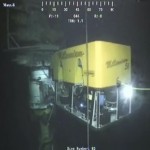On day 84 of the gulf oil disaster, BP put in place the latest containment cap over the leaking well. Known as the “Capping Stack” procedure, the tighter fitting cap aims to capture almost all of the oil spewing into the gulf.

National incident Commander, Thad Allen issued the following statement on Monday:
“Significant progress has been made on the capping stack installation. As a result of that progress, BP will perform a “Well Integrity Test” tomorrow morning. This test involves closing one or more of the valves on the new cap for a period of time to allow BP to measure pressures in the well.
It also requires that the Helix Producer and Q4000 collection systems be ramped down and placed in standby mode during the test. The measurements that will be taken during this test will provide valuable information about the condition of the well below the sea level and help determine whether or not it is possible to shut the well for a period of time, such as during a hurricane or bad weather, between now and when the relief wells are complete.”
According to Allen, the test will likely last anywhere from 6 to 48 hours or more, depending on the measurements that are observed.
Upon completion of the test, the collection of oil will resume, Allen said.
While the tighter fitting cap may capture almost all of the oil from the leaking well, and this is not assurred, it is only a temporary fix. The lasting solution for plugging the leaking well is the relief well which will connect with it some 18,000 feet below the water’s surface and sealed with mud and cement.
According to BP, on Monday the first relief well had been drilled to a depth of about 17,840 feet, while the back-up well was at 15,874 feet below the surface of the water.
It is anticipated that the leaking well could finally be plugged by mid-to late August.
Estimates vary widely regarding the amount of oil that has spewed into the gulf. Official estimates have put those figures between 35,000-65,000 barrels of oil per day since the Deepwater Horizon oil rig exploded and sank on April 20, about 50 miles off the Louisiana coast, killing 11 people.


